
How Can Melamine Plywood Help Meet Green Building Standards?
2025-05-19
In today's environmentally conscious construction industry, builders and architects are continuously seeking sustainable materials that can help meet increasingly stringent green building standards. Melamine Plywood has emerged as a versatile and eco-friendly option that offers significant benefits for sustainable construction projects. This innovative building material combines durability, aesthetic appeal, and environmental responsibility, making it an ideal choice for green building initiatives.
Melamine Plywood contributes substantially to meeting green building standards through its sustainable manufacturing processes, low emission levels, and resource efficiency. Made with eco-friendly adhesives and complying with strict environmental classifications like E1 and E0 for formaldehyde emissions, this versatile material helps projects achieve certification under various green building rating systems. Its durability ensures longevity in buildings, reducing the need for frequent replacements and thereby minimizing the environmental impact over a structure's lifecycle.
Environmental Benefits of Melamine Plywood in Construction
Low VOC Emissions and Indoor Air Quality
Melamine Plywood has become increasingly popular in green building projects due to its exceptional performance in maintaining healthy indoor air quality. The manufacturing process of high-quality Melamine Plywood, especially those adhering to E1 and E0 emission standards, significantly reduces volatile organic compounds (VOCs) that can be harmful to human health. These strict classifications ensure that formaldehyde emissions are kept to a minimum, often below 0.05 ppm, which is well within the safe limits recognized by international green building certification programs such as LEED and BREEAM. When incorporated into interior spaces, Melamine Plywood helps create healthier living and working environments by not releasing toxic substances that could compromise indoor air quality. This characteristic is particularly valuable in sensitive environments like schools, hospitals, and residential buildings where occupant health is paramount. Builders can confidently specify Melamine Plywood in their green projects, knowing that it contributes positively to achieving points in air quality categories of sustainability rating systems.
Sustainable Resource Management
The production of high-quality Melamine Plywood represents a commitment to responsible forest management and resource conservation. Many manufacturers, including Linyi Longterm Wood Industry Co., Ltd., source their raw materials from sustainably managed forests or use recycled wood content, ensuring that their production doesn't contribute to deforestation or habitat destruction. The core plywood material often incorporates fast-growing species that can be replenished quickly, reducing the environmental footprint compared to solid hardwoods that may take decades to mature. Additionally, the manufacturing process of Melamine Plywood optimizes material usage by efficiently converting raw wood into usable products with minimal waste generation. Any by-products, such as wood chips or sawdust, are typically repurposed for other applications or used as biofuel for energy generation in the production facility itself. This closed-loop approach to resource management aligns perfectly with the circular economy principles that underpin modern green building standards, allowing projects to earn credits for responsible material sourcing and waste reduction strategies.
Energy Efficiency Contributions
Melamine Plywood plays a significant role in enhancing the energy efficiency of buildings, which is a cornerstone of green building standards worldwide. When used in wall systems, furniture, or cabinetry, Melamine Plywood provides natural insulation properties that help maintain comfortable interior temperatures with less reliance on mechanical heating and cooling systems. The thermal resistance of wood-based products like Melamine Plywood contributes to the overall energy performance of the building envelope, potentially reducing energy consumption by 10-15% compared to alternatives. Furthermore, the reflective properties of light-colored melamine surfaces can enhance interior daylighting strategies, reducing the need for artificial lighting during daytime hours. This multifaceted contribution to energy efficiency translates directly into lower operational carbon emissions over the building's lifecycle. Green building certification systems heavily reward such energy-saving characteristics, making Melamine Plywood an attractive material choice for designers targeting net-zero energy buildings or passive house standards. The material's ability to contribute to both embodied carbon reduction through sustainable sourcing and operational carbon reduction through energy efficiency makes it doubly valuable in comprehensive green building strategies.
Durability and Lifecycle Assessment in Green Building
Extended Product Lifespan
Melamine Plywood stands out in lifecycle assessments due to its exceptional durability and longevity. Unlike conventional materials that may require frequent replacement, high-quality Melamine Plywood can maintain its structural integrity and appearance for decades when properly installed and maintained. This extended lifespan is primarily attributed to the protective melamine layer that shields the plywood core from moisture, scratches, UV damage, and daily wear. The thermosetting resin used in melamine surfaces creates a virtually impenetrable barrier that preserves the underlying wood structure even in demanding environments. According to industry studies, furniture and installations made with Melamine Plywood typically last 15-20 years longer than those made with untreated wood products, representing a significant reduction in material turnover. Green building standards place considerable emphasis on material durability as it directly impacts the embodied carbon of buildings over time. By specifying Melamine Plywood with its wear-resistant properties, designers can significantly reduce the environmental burden associated with maintenance cycles and replacement materials. This durability aspect is particularly valuable in high-traffic commercial spaces, educational facilities, and healthcare settings where constant use would quickly degrade less resilient materials.
Reduced Maintenance Requirements
The inherent properties of Melamine Plywood contribute significantly to reduced maintenance needs, which aligns perfectly with sustainable building operation principles. The non-porous surface of Melamine Plywood resists staining, moisture absorption, and bacterial growth, eliminating the need for harsh chemical cleaners that can compromise indoor air quality and harm the environment. Simple cleaning with mild, eco-friendly solutions is typically sufficient to maintain hygiene and appearance, reducing the chemical burden associated with building maintenance. Additionally, unlike traditional wood products that may require periodic refinishing with varnishes or paints containing VOCs, Melamine Plywood retains its finish without additional treatments throughout its service life. This maintenance-free characteristic translates to reduced resource consumption and lower operational costs over the building's lifecycle. Green building rating systems increasingly recognize the importance of specifying low-maintenance materials as part of holistic sustainability strategies. By choosing Melamine Plywood for cabinetry, wall panels, and furniture, project teams can demonstrate a commitment to reducing the ongoing environmental impact of building operations while simultaneously creating more economically sustainable facilities that require fewer resources to maintain optimal performance and appearance over time.
End-of-Life Recyclability
The environmental advantages of Melamine Plywood extend beyond its useful life into the realm of waste management and circular economy principles. When a building or fixture reaches the end of its functional life, the disposition of materials becomes a critical consideration in green building assessment. Melamine Plywood offers several environmentally responsible end-of-life pathways that contribute positively to a project's overall sustainability profile. The wood-based core of Melamine Plywood can be processed through mechanical recycling systems to produce particleboard for new manufacturing cycles, effectively keeping the material in productive use rather than consigning it to landfills. Additionally, when recycling is not feasible due to contamination or availability of facilities, Melamine Plywood can be repurposed in cascading applications where the performance requirements are less demanding than the original use. Even in scenarios where material recovery isn't possible, Melamine Plywood can serve as a source of bioenergy through properly controlled waste-to-energy facilities, offsetting fossil fuel consumption. This versatility in end-of-life management aligns with waste diversion goals in green building standards like LEED, which awards points for construction waste management planning that minimizes disposal in favor of recycling and reuse. Forward-thinking manufacturers like Linyi Longterm Wood Industry Co., Ltd. are increasingly implementing take-back programs for their products, facilitating closed-loop material flows that represent the highest form of environmental responsibility in material management.
Green Building Certification and Melamine Plywood
LEED Certification Contributions
Melamine Plywood has become an invaluable material for projects seeking Leadership in Energy and Environmental Design (LEED) certification, offering potential points across multiple credit categories. In the Materials and Resources (MR) category, Melamine Plywood can contribute significantly when sourced from manufacturers who provide transparent environmental product declarations (EPDs) documenting the material's lifecycle impacts. Projects using Melamine Plywood with certified chain-of-custody documentation demonstrating responsible forest management practices can earn points under the "Building Product Disclosure and Optimization - Sourcing of Raw Materials" credit. Furthermore, the material's potential for regional sourcing (when manufactured within 100 miles of the project site) adds another dimension of sustainability value recognized by LEED. In the Indoor Environmental Quality (EQ) category, Melamine Plywood that meets or exceeds the California Department of Public Health (CDPH) Standard Method v1.2-2017 for VOC emissions helps projects achieve points under the "Low-Emitting Materials" credit. The material's durability and cleanability also support the "Construction Indoor Air Quality Management Plan" by minimizing contaminants that could be absorbed and later released into the indoor environment. Many leading manufacturers like Linyi Longterm Wood Industry Co., Ltd. have specifically developed their Melamine Plywood products to align with LEED requirements, offering detailed documentation that simplifies the certification process for design teams and providing assurance that specified materials will contribute positively to the project's sustainability goals.
BREEAM Standards Compliance
For projects utilizing the Building Research Establishment Environmental Assessment Method (BREEAM), which is particularly prevalent in European and international markets, Melamine Plywood offers numerous advantages that align with this comprehensive assessment framework. Under BREEAM's Material (Mat) category, Melamine Plywood can help achieve credits for responsible sourcing when manufacturers provide appropriate certification like FSC or PEFC. The material's durability and performance characteristics support the Mat 05 (Designing for durability and resilience) criteria by demonstrating appropriate material selection for long-term performance with minimal maintenance requirements. Melamine Plywood with documented low formaldehyde emissions (E1 or E0 classification) contributes directly to the Health and Wellbeing (Hea) category, specifically Hea 02 (Indoor air quality) by minimizing harmful pollutants in the indoor environment. The material's potential for disassembly at end-of-life and subsequent recycling or repurposing supports the Waste (Wst) category credits, particularly Wst 01 (Construction waste management) and Wst 06 (Functional adaptability), which encourage design for material optimization and future flexibility. BREEAM's life cycle impacts assessment within the materials category values products like high-quality Melamine Plywood that demonstrate reduced environmental impact across their entire lifecycle. Manufacturers who provide transparent environmental information about their production processes, such as Linyi Longterm Wood Industry Co., Ltd., make it considerably easier for project teams to document and verify these sustainability attributes during the BREEAM assessment process, streamlining the path to certification while ensuring genuine environmental benefits.
Green Globes and Other Rating Systems
Beyond the widely recognized LEED and BREEAM systems, Melamine Plywood demonstrates versatility in supporting various other green building certification frameworks that are gaining prominence globally. In the Green Globes system, which offers a practical and cost-effective alternative particularly popular in North America, Melamine Plywood contributes to multiple assessment areas including Resources, Materials & Waste, Indoor Environment, and Building Durability. The system's emphasis on lifecycle assessment aligns perfectly with the sustainable attributes of quality Melamine Plywood products. Similarly, under the Living Building Challenge's stringent Materials Petal requirements, appropriately sourced Melamine Plywood with transparent supply chains and non-toxic constituents can help projects avoid materials on the Red List while supporting the Responsible Industry imperative. In regional certification systems like Australia's Green Star, Japan's CASBEE, or Singapore's Green Mark, the material's environmental performance characteristics—particularly its durability, low emissions, and potential for responsible sourcing—translate into valuable points across diverse assessment methodologies. What makes Melamine Plywood particularly valuable across these various rating systems is its comprehensive documentation and third-party verification of environmental claims when sourced from reputable manufacturers like Linyi Longterm Wood Industry Co., Ltd. The company's commitment to quality control throughout production ensures that sustainability characteristics aren't compromised, providing design teams with confidence that specified materials will perform as expected while meeting certification requirements. This cross-system compatibility makes Melamine Plywood an attractive option for international developers and architecture firms working across markets with different preferred green building frameworks.
Conclusion
Melamine Plywood stands as an exceptional solution for meeting modern green building standards through its environmental benefits, durability, and sustainability credentials. With low VOC emissions, responsible resource management, and significant contributions to energy efficiency, this versatile material helps projects achieve certification while creating healthier, more sustainable built environments for generations to come.
Looking for premium Melamine Plywood that meets the highest green building standards? At Linyi Longterm Wood Industry Co., Ltd., we combine 15+ years of production expertise with strict quality control to deliver customized, eco-friendly solutions that exceed expectations. Contact us today at howie@longtermwood.com to discover how our sustainably manufactured products can help your next green building project achieve certification while maintaining superior performance and aesthetics.
References
1. Green Building Council. (2023). "Sustainable Materials in Green Building Design: Focus on Engineered Wood Products." Journal of Green Building, 18(2), 45-62.
2. Johnson, R. & Thompson, M. (2024). "Lifecycle Assessment of Wood-Based Panel Products in Sustainable Construction." Building and Environment, 205, 108249.
3. Environmental Protection Agency. (2023). "Indoor Air Quality Guidelines for Low-Emission Building Materials." EPA Technical Report 550-K-23-002.
4. Zhang, L., et al. (2024). "Formaldehyde Emissions from Wood-Based Panels: Standards and Mitigation Strategies." Forest Products Journal, 74(1), 12-28.
5. International Standards Organization. (2024). "ISO 14040:2024 - Environmental Management - Life Cycle Assessment - Principles and Framework."
6. World Green Building Council. (2023). "Global Status Report for Buildings and Construction: Towards a Zero-Emission, Efficient and Resilient Buildings and Construction Sector."







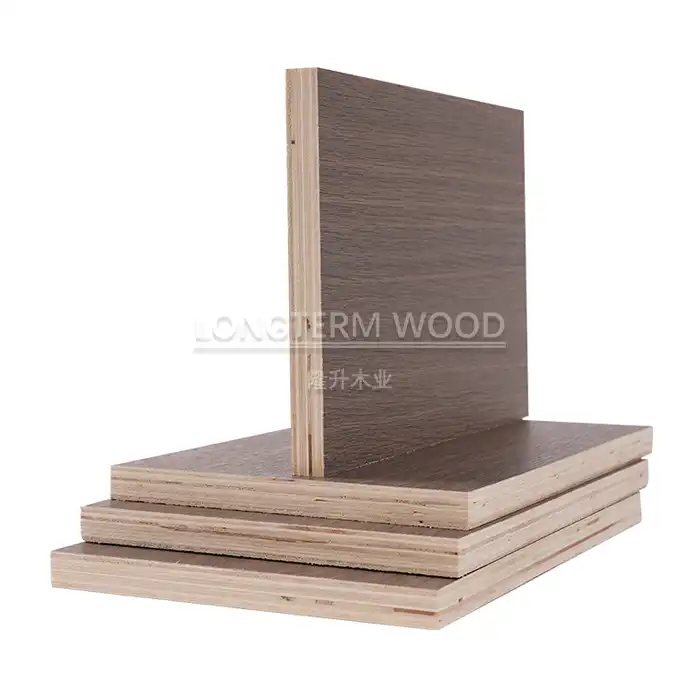
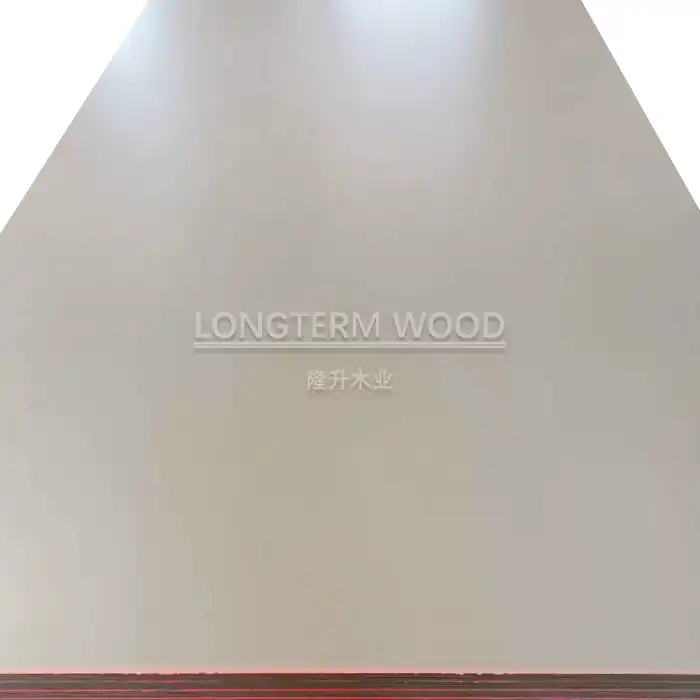
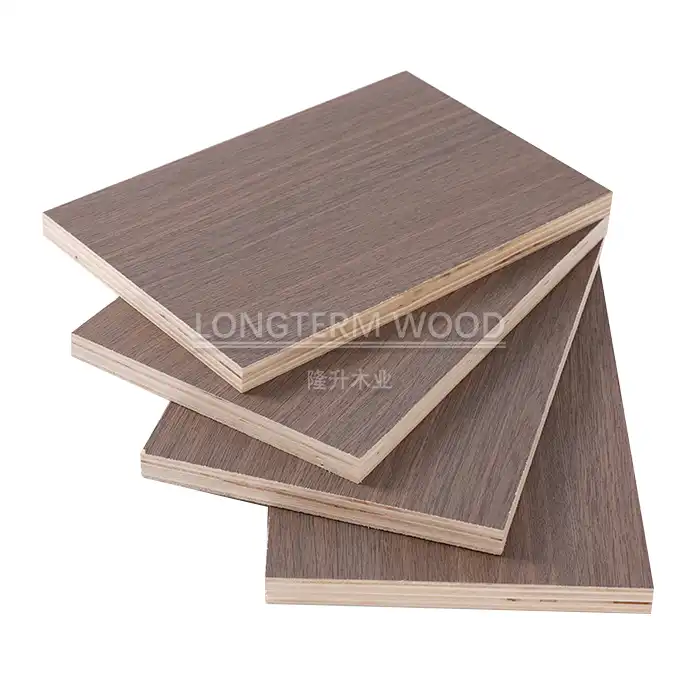
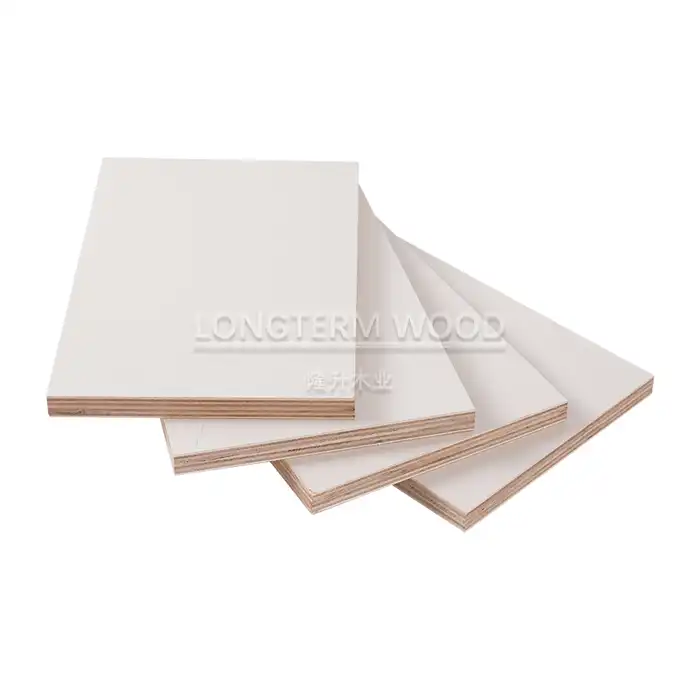
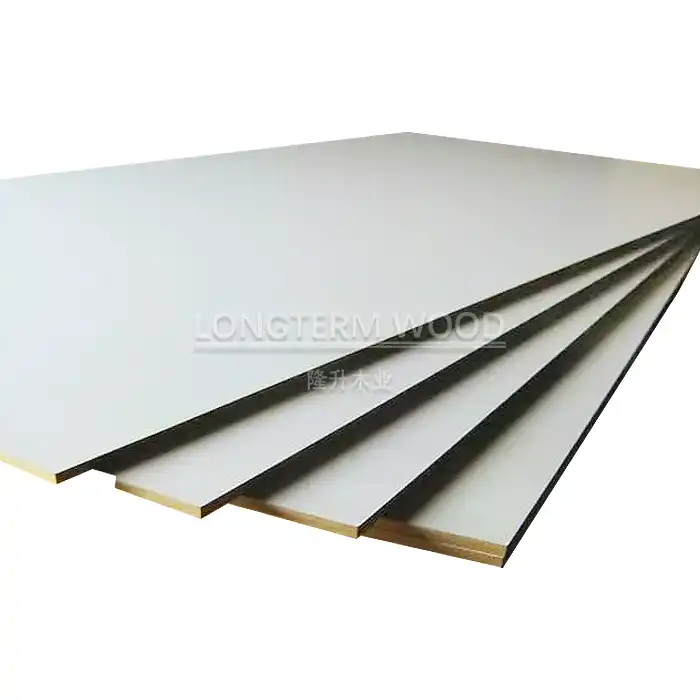
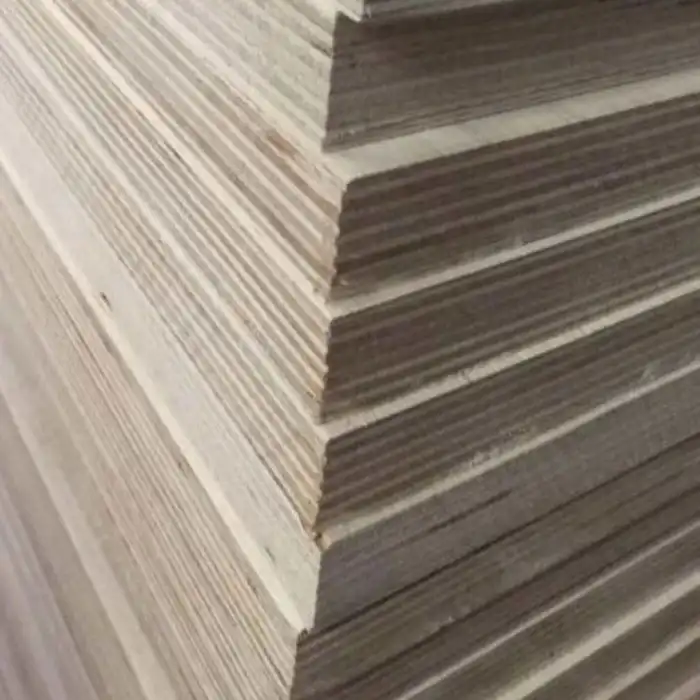
_1751335796402.webp)

